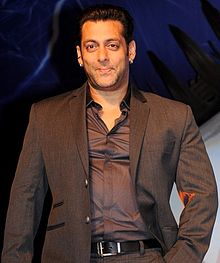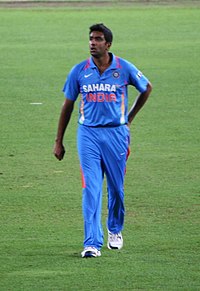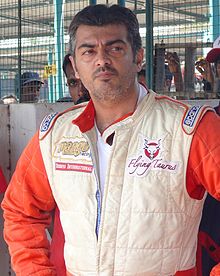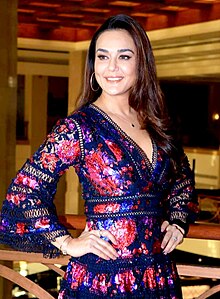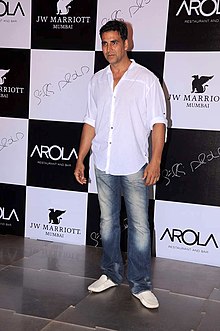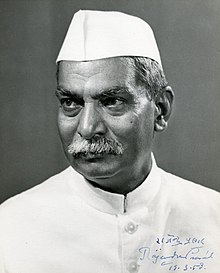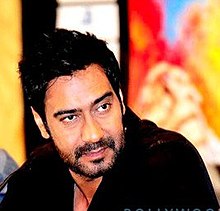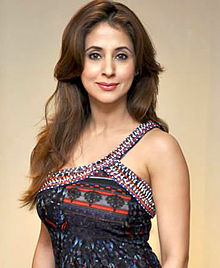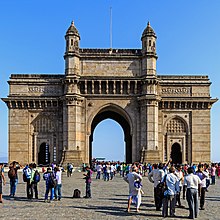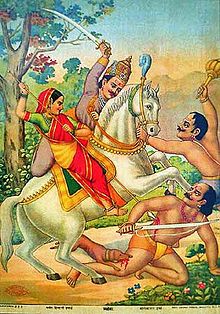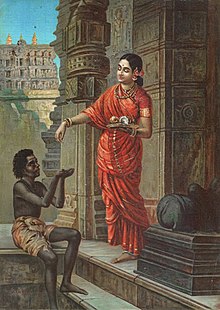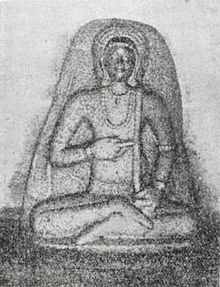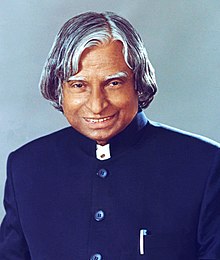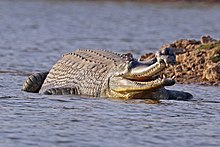Portal:India
Introduction


India, officially the Republic of India, is a country in South Asia. It is the seventh-largest country in the world by area and the most populous country. Bounded by the Indian Ocean on the south, the Arabian Sea on the southwest, and the Bay of Bengal on the southeast, it shares land borders with Pakistan to the west; China, Nepal, and Bhutan to the north; and Bangladesh and Myanmar to the east. In the Indian Ocean, India is in the vicinity of Sri Lanka and the Maldives; its Andaman and Nicobar Islands share a maritime border with Thailand, Myanmar, and Indonesia. (Full article...)

Nyctibatrachus major, the Malabar night frog, large wrinkled frog, or Boulenger's narrow-eyed frog is a species of frog in the family Nyctibatrachidae, commonly known as the robust frogs. It was described in 1882 by the zoologist George Albert Boulenger, and is the type species of the genus Nyctibatrachus. It is a large frog for its genus, with an adult snout–vent length of 31.5–52.0 mm (1.24–2.05 in) for males and 43.7–54.2 mm (1.72–2.13 in) for females. It is mainly brownish to greyish in colour, with a dark greyish-brown upperside, a greyish-white underside, and light grey sides. It also has a variety of grey or brown markings. When preserved in ethanol, it is mostly greyish-brown to grey, with whitish sides. Sexes can be told apart by the presence of the femoral glands (bulbous glands near the inner thigh) in males.
The species is endemic to the Western Ghats mountain range of India, where it is found in Kerala, Tamil Nadu, and Karnataka. Adults inhabit fast-moving forest streams at elevations of up to 900 m (3,000 ft) and have highly specific habitat requirements. Adults are mostly found in or near water and are nocturnal; subadults can be found during both the night and day. Its diet mainly consists of other frogs and insect larvae. Over a period of several days or weeks, females lay multiple small clutches of eggs on leaves and rocks overhanging water; tadpoles drop into the water below on hatching. The species is currently classified as being vulnerable on the IUCN Red List owing to its small and fragmented range and ongoing habitat degradation. Threats to the species include habitat loss, increased human presence near the streams it inhabits, and possibly nitrate pollution caused by fertiliser overuse. (Full article...)

The Kingdom of Mysore was a geopolitical realm in southern India founded in around 1399 in the vicinity of the modern-day city of Mysore and prevailed until 1950. The territorial boundaries and the form of government transmuted substantially throughout the kingdom's lifetime. While originally a feudal vassal under the Vijayanagara Empire, it became a princely state in British India from 1799 to 1947, marked in-between by major political changes.
The kingdom, which was founded and ruled for the most part by the Wadiyars, initially served as a feudal vassal under the Vijayanagara Empire. With the gradual decline of the Empire, the 16th-century Timmaraja Wodeyar II declared independence from it. The 17th century saw a steady expansion of its territory and, during the rules of Narasaraja Wodeyar I and Devaraja Wodeyar II, the kingdom annexed large expanses of what is now southern Karnataka and parts of Tamil Nadu, becoming a formidable power in the Deccan. (Full article...)
Ram Narayan (IPA: [raːm naːˈɾaːjəɳ]; 25 December 1927 – 9 November 2024), often referred to with the title Pandit, was an Indian musician who popularised the bowed instrument sarangi as a solo concert instrument in Hindustani classical music and became the first internationally successful sarangi player.
Narayan was born near Udaipur and learned to play the sarangi at an early age. He studied under sarangi players and singers and, as a teenager, worked as a music teacher and travelling musician. All India Radio, Lahore, hired Narayan as an accompanist for vocalists in 1944. Narayan relocated to Delhi following the partition of India in 1947, but, wishing to go beyond accompaniment and frustrated with his supporting role, moved to Mumbai in 1949 to work in Indian cinema. (Full article...)
Creative director and writer Amole Gupte developed the idea with his wife Deepa Bhatia, who was the film's editor. Shankar–Ehsaan–Loy composed the score, and Prasoon Joshi wrote the lyrics for many of the songs. Principal photography took place in Mumbai, and in Panchgani's New Era High School, where some of the school's students participated in the filming. (Full article...)
The total number of participants was 1,737: 937 in the Open and 800 in the Women's event. The number of registered teams was 188 from 186 nations in the Open section and 162 from 160 nations in the Women's section; being the host nation, India had three teams participating in each section. Both sections set team participation records. The main venue of the Chess Olympiad was the convention centre at the Four Points by Sheraton, while the opening and closing ceremonies were held at the Jawaharlal Nehru Stadium. The Chief Arbiter of the event was France's Laurent Freyd. (Full article...)
The Western Chalukya Empire (/tʃəˈluːkjə/ chə-LOO-kyə) ruled most of the western Deccan, South India, between the 10th and 12th centuries. This Kannada-speaking dynasty is sometimes called the Kalyani Chalukya after its regal capital at Kalyani, today's Basavakalyan in the modern Bidar district of Karnataka state, and alternatively the Later Chalukya from its theoretical relationship to the 6th-century Chalukya dynasty of Badami. The dynasty is called Western Chalukyas to differentiate from the contemporaneous Eastern Chalukyas of Vengi, a separate dynasty. Before the rise of these Chalukyas, the Rashtrakuta Empire of Manyakheta controlled most of the Deccan Plateau and Central India for over two centuries. In 973, seeing confusion in the Rashtrakuta empire after a successful invasion of their capital by the ruler of the Paramara dynasty of Malwa, Tailapa II, a feudatory of the Rashtrakuta dynasty ruling from Bijapur region defeated his overlords and made Manyakheta his capital. The dynasty quickly rose to power and grew into an empire under Someshvara I who moved the capital to Kalyani.
For over a century, the two empires of South India, the Western Chalukyas and the Chola dynasty of Thanjavur fought many fierce wars to control the fertile region of Vengi. During these conflicts, the Eastern Chalukyas of Vengi, distant cousins of the Western Chalukyas but related to the Cholas by marriage, took sides with the Cholas further complicating the situation. During the rule of Vikramaditya VI, in the late 11th and early 12th centuries, the Western Chalukyas convincingly contended with the Cholas and reached a peak, ruling territories that spread over most of the Deccan, between the Narmada River in the north and Kaveri River in the south. His exploits were not limited to the south for even as a prince, during the rule of Someshvara I, he had led successful military campaigns as far east as modern Bihar and Bengal. During this period the other major ruling families of the Deccan, the Hoysala Empire, the Seuna dynasty, the Kakatiya dynasty and the Kalachuris of Kalyani, were subordinates of the Western Chalukyas and gained their independence only when the power of the Chalukya waned during the later half of the 12th century. (Full article...)
With an estimated total gross of ₹102.5 crore (today's adjusted gross ₹524 crore), with ₹89 crore (today's adjusted gross ₹455 crore) earned in India and ₹13.50 crore (today's adjusted gross ₹69 crore) in overseas, the film was the highest-grossing Indian film of 1995 and one of the most successful Indian films in history. When adjusted for inflation, it is the second highest-grossing Indian film of the 1990s, behind Hum Aapke Hain Koun..! It won 10 Filmfare Awards—the most for a single film at that time—and the National Film Award for Best Popular Film Providing Wholesome Entertainment. Its soundtrack album became one of the most popular of the 1990s. (Full article...)
Shahrukh Khan (pronounced [ˈʃɑːɦɾʊx xɑːn] ; born 2 November 1965), also known by the initialism SRK, is an Indian actor and film producer who works in Hindi cinema. Referred to in the media as the "Baadshah of Bollywood" and "King Khan", he has appeared in more than 100 films, and earned numerous accolades, including 14 Filmfare Awards. He has been awarded the Padma Shri by the Government of India, as well as the Order of Arts and Letters and Legion of Honour by the Government of France. Khan has a significant following in Asia and the Indian diaspora worldwide. In terms of audience size and income, several media outlets have described him as one of the most successful film stars in the world. Many of his films thematise Indian national identity and connections with diaspora communities, or gender, racial, social and religious differences and grievances.
Khan began his career with appearances in several television series in the late 1980s and made his Bollywood debut in 1992 with the musical romance Deewana. He was initially recognised for playing villainous roles in the films Baazigar (1993) and Darr (1993). Khan established himself by starring in a series of top-grossing romantic films, including Dilwale Dulhania Le Jayenge (1995), Dil To Pagal Hai (1997), Kuch Kuch Hota Hai (1998), Mohabbatein (2000), Kabhi Khushi Kabhie Gham... (2001), Kal Ho Naa Ho (2003), Veer-Zaara (2004) and Kabhi Alvida Naa Kehna (2006). He earned critical acclaim for his portrayal of an alcoholic in the period romantic drama Devdas (2002), a NASA scientist in the social drama Swades (2004), a hockey coach in the sports drama Chak De! India (2007), and a man with Asperger syndrome in the drama My Name Is Khan (2010). Further commercial successes came with the romances Om Shanti Om (2007) and Rab Ne Bana Di Jodi (2008), and with his expansion to comedies in Chennai Express (2013) and Happy New Year (2014). Following a brief setback and hiatus, Khan made a career comeback with the 2023 action thrillers Pathaan and Jawan, both of which rank among the highest-grossing Indian films. (Full article...)
Made on a shoestring budget of ₹80 million (US$960,000), Kahaani was conceived and developed by Ghosh, who co-wrote the film with Advaita Kala. The crew often employed guerrilla-filmmaking techniques on Kolkata's city streets to avoid attracting attention. Its creative portrayal of the city and its use of local crew and cast members made it a notable film. Kahaani explores themes of feminism and motherhood in a male-dominated Indian society. The film also makes several allusions to Satyajit Ray's films, such as Charulata (1964), Aranyer Din Ratri (1970), and Joi Baba Felunath (1979). The film's musical score and soundtrack are composed by Clinton Cerejo and Vishal–Shekhar respectively, with cinematography handled by Setu and editing done by Namrata Rao. (Full article...)

Hoysala literature is the large body of literature in the Kannada and Sanskrit languages produced by the Hoysala Empire (1025–1343) in what is now southern India. The empire was established by Nripa Kama II, came into political prominence during the rule of King Vishnuvardhana (1108–1152), and declined gradually after its defeat by the Khalji dynasty invaders in 1311.
Kannada literature during this period consisted of writings relating to the socio-religious developments of the Jain and Veerashaiva faiths, and to a lesser extent that of the Vaishnava faith. The earliest well-known brahmin writers in Kannada were from the Hoysala court. While most of the courtly textual production was in Kannada, an important corpus of monastic Vaishnava literature relating to Dvaita (dualistic) philosophy was written by the renowned philosopher Madhvacharya in Sanskrit. (Full article...)
Released in India on 22 April 2016, Nil Battey Sannata was distributed by Eros International and garnered critical and audience acclaim. Reviewers praised most aspects of the production, especially its narrative and realism, and the performances of the cast, Bhaskar's in particular. At the 62nd Filmfare Awards, Iyer won the Filmfare Award for Best Debut Director, while Bhaskar and Shukla won the Screen Awards for Best Actress (Critics) and Best Child Artist respectively. The film did well at the box-office, collecting a total of around ₹69 million (US$830,000) during its entire theatrical run. The same year, the film was remade in Tamil as Amma Kanakku, with Iyer returning to direct. The following year, it was remade in Malayalam as Udaharanam Sujatha. (Full article...)

Kalidas (pronounced [kaːɭidaːs] transl. The Servant of Kali) is a 1931 Indian biographical film directed by H. M. Reddy and produced by Ardeshir Irani. It is notable for being the first sound film in the Tamil and Telugu languages, and the first sound film to be made in a Dravidian language. It was based on the life of the Sanskrit poet Kalidasa, hence its namesake; it featured P. G. Venkatesan in the title role and T. P. Rajalakshmi as the female lead, with L. V. Prasad, Thevaram Rajambal, T. Susheela Devi, J. Sushila, and M. S. Santhanalakshmi in supporting roles.
Kalidas, principally in Tamil, contained additional dialogue in Telugu and Hindi. While Rajalakshmi spoke Tamil, Venkatesan spoke only Telugu due to his lack of fluency in Tamil, and Prasad spoke only Hindi. Despite its mythological theme, the film featured songs from much later time periods, such as the compositions of Carnatic musician Tyagaraja, publicity songs of the Indian National Congress, and songs about Mahatma Gandhi and the Indian independence movement. The sound was recorded using German-made technology. Kalidas was shot in Bombay on the sets of India's first sound film Alam Ara (1931) and was completed in eight days. (Full article...)
Shefali Shah (née Shetty; born 22 May 1973) is an Indian actress of film, television and theatre. Working primarily in independent Hindi films, she has received multiple local and foreign accolades for her performances. Shah's acting career started on the Gujarati stage before she debuted on television in 1993. After small parts on television and a brief stint with cinema in Rangeela (1995), she gained wider recognition in 1997 for her role in the popular series Hasratein. This was followed by lead roles in the TV series Kabhie Kabhie (1997) and Raahein (1999). A supporting role in the crime film Satya (1998) won her positive notice and a Filmfare Critics Award, and she soon shifted her focus to film acting starting with a lead role in the Gujarati drama Dariya Chhoru (1999).
Shah was selective about her roles through the following decades, resulting in intermittent film work, mostly in character parts and often to appreciation from critics. She appeared in the international co-production Monsoon Wedding (2001) and the mainstream comedy-drama Waqt: The Race Against Time (2005). In 2007, her portrayal of Kasturba Gandhi in the biographical drama Gandhi, My Father won her the Best Actress prize at the Tokyo International Film Festival, and she received the National Film Award for Best Supporting Actress for the drama film The Last Lear. Among her subsequent film roles, she played a leading part in Kucch Luv Jaisaa (2011) and was noted for her work in the social problem film Lakshmi (2014) and the ensemble drama Dil Dhadakne Do (2015). (Full article...)
The film was produced by Kumar and Ramesh Taurani's Tips Industries on a budget of ₹200–250 million (about US$4.2–5.2 million in 2002). The story and dialogue were written by Santoshi and Piyush Mishra respectively, while Anjum Rajabali drafted the screenplay. K. V. Anand, V. N. Mayekar and Nitin Chandrakant Desai were in charge of the cinematography, editing and production design respectively. Principal photography took place in Agra, Manali, Mumbai and Pune from January to May 2002. The soundtrack and film score were composed by A. R. Rahman, with the songs "Mera Rang De Basanti" and "Sarfaroshi Ki Tamanna" being well received in particular. (Full article...)
The film was shot mainly on location, had a limited budget, featured mostly amateur actors, and was made by an inexperienced crew. Lack of funds led to frequent interruptions in production, which took nearly three years, but the West Bengal government pulled Ray out of debt by buying the film for the equivalent of $60,000, which it turned into a profit of $700,000 by 1980. The sitar player Ravi Shankar composed the film's soundtrack and score using classical Indian ragas. Subrata Mitra was in charge of the cinematography while editing was handled by Dulal Dutta. Following its premiere on 3 May 1955 during an exhibition at New York's Museum of Modern Art, Pather Panchali was released in Calcutta the same year to an enthusiastic reception. A special screening was attended by the Chief Minister of West Bengal and the Prime Minister of India. (Full article...)
Aitraaz tells the story of a man accused of sexual harassment by his female superior, and was released on 12 November 2004 to positive reviews. Chopra received widespread critical acclaim for her performance. Loosely based on the 1994 film Disclosure, the film was a major commercial success grossing ₹260 million at the box office against a budget of ₹80 million, and has been noted for its bold subject of sexual harassment. (Full article...)
Elephants are the largest living land animals. Three living species are currently recognised: the African bush elephant (Loxodonta africana), the African forest elephant (L. cyclotis), and the Asian elephant (Elephas maximus). They are the only surviving members of the family Elephantidae and the order Proboscidea; extinct relatives include mammoths and mastodons. Distinctive features of elephants include a long proboscis called a trunk, tusks, large ear flaps, pillar-like legs, and tough but sensitive grey skin. The trunk is prehensile, bringing food and water to the mouth and grasping objects. Tusks, which are derived from the incisor teeth, serve both as weapons and as tools for moving objects and digging. The large ear flaps assist in maintaining a constant body temperature as well as in communication. African elephants have larger ears and concave backs, whereas Asian elephants have smaller ears and convex or level backs.
Elephants are scattered throughout sub-Saharan Africa, South Asia, and Southeast Asia and are found in different habitats, including savannahs, forests, deserts, and marshes. They are herbivorous, and they stay near water when it is accessible. They are considered to be keystone species, due to their impact on their environments. Elephants have a fission–fusion society, in which multiple family groups come together to socialise. Females (cows) tend to live in family groups, which can consist of one female with her calves or several related females with offspring. The leader of a female group, usually the oldest cow, is known as the matriarch. (Full article...)
The Chalukya dynasty ([tʃaːɭukjə]) was a Classical Indian dynasty that ruled large parts of southern and central India between the 6th and the 12th centuries. During this period, they ruled as three related yet individual dynasties. The earliest dynasty, known as the "Badami Chalukyas", ruled from Vatapi (modern Badami) from the middle of the 6th century. The Badami Chalukyas began to assert their independence at the decline of the Kadamba kingdom of Banavasi and rapidly rose to prominence during the reign of Pulakeshin II. After the death of Pulakeshin II, the Eastern Chalukyas became an independent kingdom in the eastern Deccan. They ruled from Vengi until about the 11th century. In the western Deccan, the rise of the Rashtrakutas in the middle of the 8th century eclipsed the Chalukyas of Badami before being revived by their descendants, the Western Chalukyas, in the late 10th century. These Western Chalukyas ruled from Kalyani (modern Basavakalyan) until the end of the 12th century.
The rule of the Chalukyas marks an important milestone in the history of South India and a golden age in the history of Karnataka. The political atmosphere in South India shifted from smaller kingdoms to large empires with the ascendancy of Badami Chalukyas. A Southern India-based kingdom took control and consolidated the entire region between the Kaveri and the Narmada rivers. The rise of this empire saw the birth of efficient administration, overseas trade and commerce and the development of new style of architecture called "Chalukyan architecture". Kannada literature, which had enjoyed royal support in the 9th century Rashtrakuta court found eager patronage from the Western Chalukyas in the Jain and Veerashaiva traditions. The 11th century saw the patronage of Telugu literature under the Eastern Chalukyas. (Full article...)
Dimple Kapadia (born 8 June 1957) is an Indian actress predominantly appearing in Hindi films. Born and raised in Mumbai by wealthy parents, she aspired to become an actress from a young age and received her first opportunity through her father's efforts to launch her in the film industry. She was discovered at age 14 by the filmmaker Raj Kapoor, who cast her in the title role of his teen romance Bobby (1973), which opened to major commercial success and gained her wide public recognition. Shortly before the film's release in 1973, she married the actor Rajesh Khanna and quit acting. Their daughters, Twinkle and Rinke Khanna, both briefly worked as actresses in their youth. Kapadia returned to films in 1984, two years after her separation from Khanna. Her comeback film Saagar, which was released a year later, revived her career. Both Bobby and Saagar won her Filmfare Awards for Best Actress. Through her work over the next decade, she established herself as one of Hindi cinema's leading actresses.
While her initial roles often relied on her perceived beauty and sex appeal, Kapadia was keen to challenge herself and expand her range. She was among the first actresses who starred in women-centred Hindi action films but found greater favour with critics when she took on more dramatic roles in both mainstream and neorealist parallel cinema. Appearing in films ranging from marital dramas to literary adaptations, she played troubled women sometimes deemed reflective of her personal experience, and received acclaim for her performances in Kaash (1987), Drishti (1990), Lekin... (1991), and Rudaali (1993). For her role as a professional mourner in Rudaali, she won the National Film Award for Best Actress and a Filmfare Critics Award. She also had supporting roles in the crime dramas Prahaar (1991), Angaar (1992), Gardish (1993) and Krantiveer (1994), the latter securing her another Filmfare Award. (Full article...)
The title of the film was chosen to counter American author Katherine Mayo's 1927 polemical book Mother India, which vilified Indian culture. Mother India metaphorically represents India as a nation in the aftermath of its independence in 1947, and alludes to a strong sense of Indian nationalism and nation-building. Allusions to Hindu mythology are abundant in the film, and its lead character has been seen as a metonymic representation of an Indian woman who reflects high moral values and the concept of what it means to be a mother to society through self-sacrifice. While some authors treat Radha as the symbol of women's empowerment, others see her cast in female stereotypes. The film was shot in Mumbai's Mehboob Studios and in the villages of Maharashtra, Gujarat, and Uttar Pradesh. The music by Naushad introduced global music, including Western classical music and orchestra, to Hindi cinema. (Full article...)

Hoysala architecture is the building style in Hindu temple architecture developed under the rule of the Hoysala Empire between the 11th and 14th centuries, in the region known today as Karnataka, a state of India. Hoysala influence was at its peak in the 13th century, when it dominated the Southern Deccan Plateau region. Large and small temples built during this era remain as examples of the Hoysala architectural style, including the Chennakesava Temple at Belur, the Hoysaleswara Temple at Halebidu, and the Kesava Temple at Somanathapura. These three temples were accorded UNESCO world heritage site status in 2023. Other examples of Hoysala craftsmanship are the temples at Belavadi, Amruthapura, Hosaholalu, Mosale, Arasikere, Basaralu, Kikkeri and Nuggehalli. Study of the Hoysala architectural style has revealed a negligible Indo-Aryan influence while the impact of Southern Indian style is more distinct.
Temples built prior to Hoysala independence in the mid-12th century reflect significant Western Chalukya influences, while later temples retain some features salient to Western Chalukya architecture but have additional inventive decoration and ornamentation, features unique to Hoysala artisans. Some three hundred temples are known to survive in present-day Karnataka state and many more are mentioned in inscriptions, though only about seventy have been documented. The greatest concentration of these are in the Malnad (hill) districts, the native home of the Hoysala kings. (Full article...)
Prince Sadruddin Aga Khan (17 January 1933 – 12 May 2003) was a French-born statesman and activist who served as United Nations High Commissioner for Refugees from 1966 to 1977, during which he reoriented the agency's focus beyond Europe and prepared it for an explosion of complex refugee issues. He was also a proponent of greater collaboration between non-governmental organizations (NGOs) and UN agencies. The Prince's interest in ecological issues led him to establish the Bellerive Foundation in the late 1970s, and he was a knowledgeable and respected collector of Islamic art.
Born in Paris, France, he was the son of Sir Sultan Mahomed Shah Aga Khan and Princess Andrée Aga Khan. He married twice, but had no children of his own. Prince Sadruddin died of cancer at the age of 70, and was buried in Switzerland. (Full article...)
Selected pictures
News
- 4 November 2024 – 2024 Almora bus accident
- At least 36 people are killed and 27 others are injured when a bus plunges into a gorge near Marchula, Uttarakhand, India. (The Indian Express) (ABC News)
- 3 November 2024 – Insurgency in Jammu and Kashmir
- At least eleven people are injured in a grenade explosion caused by an unknown militant group in a flea market in Srinagar, Jammu and Kashmir, India. (Reuters)
- Three rebels are killed and four security personnel are injured during two separate shootouts in Anantnag district, Jammu and Kashmir, India. (AP)
- 3 November 2024 – Naxalite–Maoist insurgency
- Two police officers are injured in a stabbing attack by Naxalite insurgents in Sukma, Chhattisgarh, India, with their weapons being stolen. (Indian Express)
- 24 October 2024 – Insurgency in Jammu and Kashmir
- Islamist insurgents target an Indian Army vehicle with small arms fire near Gulmarg, Jammu and Kashmir, India, killing two soldiers and two civilian porters and injuring three other soldiers. (The Indian Express)
Did you know...
- ... that Zakir Husain was the first Muslim and the first governor of a state to be elected President of India?
- ... that singer Mohinder Kaur Bhamra encouraged British Indian women to join in party celebrations at a time when they were typically excluded?
- ... that Josephine Gates Kelly of the Standing Rock Reservation once hitchhiked to Washington, D.C., to protest portions of the Indian Reorganization Act?
- ... that witch-hunts in India are still prevalent?
- ... that despite losing almost one thousand men capturing Malacca in 1641, the Dutch East India Company did not invest much time or energy into it afterward?
- ... that Indian philanthropist and business executive T. Mohandas Pai has been called the "architect of modern Manipal"?
Topics related to India
Timeline of Indian history, Indus Valley Civilisation, Dholavira, Science and technology in ancient India, Meluhha, Aryan invasion theory, Out of India theory, Greek conquests in India, Indian maritime history, Maurya Empire, Ashoka, Shunga Empire, Hoysala Empire, Vijayanagara, Satavahana dynasty, Indo-Greek Kingdom, Indo-Scythians, Indo-Parthian Kingdom, Kushan Empire, Western Satraps, Gupta Empire, Chola dynasty, Pala Empire, Islamic incursions in India, Mughal Empire, Maratha Empire, British Raj, East India Company, Governor-General, Viceroy, War of Independence, 1857, Indian independence movement, Indian National Army, Azad Hind, Quit India Movement, Partition of India, History of Republic of India, Non-Aligned Movement, Sino-Indian War, Indo-Pakistani War of 1947–1948, Indo-Pakistani War of 1965, Indo-Pakistani War of 1971, Kargil War, 2001–02 India–Pakistan standoff, Military, Demographic
Law, Hindu law, Constitution, Political parties (Indian National Congress, Bharatiya Janata Party), Foreign relations, Elections, Political divisions, Reservation in India
Government agencies, Legislative branch (Lok Sabha, Rajya Sabha) Executive branch (President & Vice President, Prime Minister & Deputy Prime Minister, Cabinet Ministers, Cabinet Secretary, Election Commission, Foreign Minister; Law enforcement: CBI, CID, Intelligence: IB, RAW), Directorate General of Income Tax Investigation Judicial branch (Supreme Court), Armed Forces (Army, Navy, Air Force, Border Security Force, Coast Guard)
Himalayas, Western Ghats, Eastern Ghats, Indo-Gangetic Plain, Deccan Plateau, Thar Desert, Ganges, Rann of Kutch, Brahmaputra River, Northeast India; Mountains, Valleys, Islands, Rivers; States and union territories, Cities, Districts, Regions, Fauna, Flora
Rupee, Bombay Stock Exchange, National Stock Exchange, Standard of living, Companies, Reserve Bank of India, Energy policy (Solar, Wind, Nuclear), Tourism, Transport (Expressways, Rail transport, Auto rickshaw),
Languages, Standard of living, Religion
Music (Carnatic, Hindustani, Indi-pop), Dance, Languages, Literature, Architecture, Film & TV, Cuisine, Holidays, Folklore, Education, Media, Indian martial arts
Indian Council of Agricultural Research (ICAR), Indian Institute of Astrophysics, National Centre for Software Technology, AIIMS, IISc, IIT, NIT, BITS-Pilani, INRegistry, Indian numbering system, Indian Space Research Organisation, National Internet Exchange of India, ICRISAT, International Institute of Information Technology, Hyderabad
Indian English, Indian nationality law, Numbering system, Indian Space Research Organisation, Telecommunications, National Highways Development Project, Flag, Vehicle registration plates, Indian nationalism, Metrication in India
Categories
Related portals
Religions in India
Indian Subcontinent
Other countries
Wikipedias in Indian languages
- অসমীয়া (Assamese)
- বাংলা (Bengali)
- भोजपुरी (Bhojpuri)
- বিষ্ণুপ্রিয়া মণিপুরী (Bishnupriya Manipuri)
- गोंयची कोंकणी / Gõychi Konknni (Konkani)
- ગુજરાતી (Gujarati)
- हिन्दी (Hindi)
- ಕನ್ನಡ (Kannada)
- कॉशुर/كشميري (Kashmiri)
- मैथिली (Maithili)
- മലയാളം (Malayalam)
- मराठी (Marathi)
- नेपाली (Nepali)
- नेपाल भाषा
- (Newari)
- ଓଡ଼ିଆ (Odiya)
- ਪੰਜਾਬੀ (Punjabi)
- पालि (Pali)
- संस्कृत (Sanskrit)
- ᱥᱟᱱᱛᱟᱲᱤ (Santali)
- سنڌي (Sindhi)
- தமிழ் (Tamil)
- తెలుగు (Telugu)
- ತುಳು (Tulu)
- اردو (Urdu)
Associated Wikimedia
The following Wikimedia Foundation sister projects provide more on this subject:
-
Commons
Free media repository -
Wikibooks
Free textbooks and manuals -
Wikidata
Free knowledge base -
Wikinews
Free-content news -
Wikiquote
Collection of quotations -
Wikisource
Free-content library -
Wikiversity
Free learning tools -
Wikivoyage
Free travel guide -
Wiktionary
Dictionary and thesaurus





























